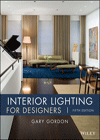Montreal, Quebec
People looking for Montreal’s new cultural quarter, the Quartier des spectacles, will surely know when they have arrived—rows of luminous red dots are projected onto the area’s sidewalks. The scheme is part of an urban improvement project meant to bring attention to a neighborhood that’s home to some 30 different performing arts venues, but that was all too often ignored.
“It’s an area that has an existing concentration of cultural assets, and it should be a major destination in Montreal,” says Anjali Mishra, interim general manager of the Quartier des spectacles Partnership, a nonprofit organization founded by area stakeholders, the city, and various levels of government. “Unfortunately, it also held a connotation of being a red light district. It’s one of the few areas of the city that hasn’t been revitalized yet, so we began with these efforts.”
Swiss graphic designer Ruedi Baur and Montreal architect Jean Beaudoin created the area’s graphic identity, which included the red dots, after winning an international competition. Axel Morgenthaler of the Montreal lighting design firm Photonic Dreams then translated that concept for application on the street. “My proposal was to create a specific lighting fixture that would be innovative technologically, but also extremely energy-efficient,” Morgenthaler says. Wanting to use LEDs, but needing a powerful narrow-beam head that would essentially act as a spotlight, Morgenthaler designed his own luminaries. Each element illuminates four dots, and each beam is delivered via a 3-watt LED, a parabolic reflector, and a custom lens. The Quartier des spectacles Partnership installed 60 of the fixtures in sections along Rue Sainte-Catherine during the first phase of the project, and it is continuing to add more over time. Looking to improve upon his original design, Morgenthaler has also developed a second generation of the luminaire with Schréder Inc. that features a DMX interface. “It allows for computer-controlled dimming so we can create dynamic, pulsing sequences along the sidewalk,” says Morgenthaler, who would use the additional feature to signal venues’ performance starts.
At La Vitrine, an information center and ticket booth, Morgenthaler also designed an elaborate custom marquee. Meant to serve more as ambient eye candy than Jumbotron, the screen consists of 3,000 “bulbs,” each holding 13 colored LEDs under a half-sphere. Far from high resolution, the resulting panels deliver animations in warm, fuzzy tones. Morgenthaler programmed the initial sequences, and other artists will soon contribute additional works. Elsewhere, many venues are also receiving new lighting in windows and on facades; most of the projects employ LED-based Color Kinetics luminaires that project slowly shifting colors throughout the night.
And in case you’re wondering about the choice of red as the scheme’s central color, Mishra says “It’s hardly a coincidence” that the dots reflect the area’s former, seedier reputation. “It’s creative reappropriation,” she says. “It doesn’t ignore the past, but builds on it for a brighter future—no pun intended.”



